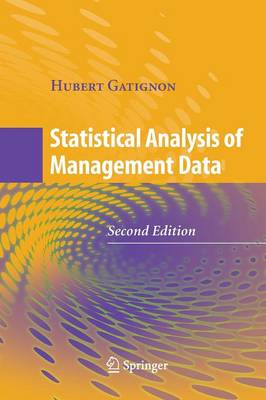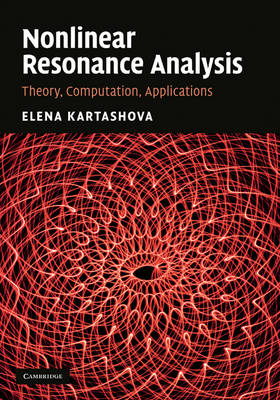Introduction to Meta Analysis
Data: 2.09.2017 / Rating: 4.8 / Views: 749Gallery of Video:
Gallery of Images:
Introduction to Meta Analysis
Metaanalysis has gained increasing popularity since the early 1990s as a way to synthesize the results from separate studies. This text is both complete and current. This book provides a clear and thorough introduction to metaanalysis, the process of synthesizing data from a series of separate studies. Metaanalysis has become a critically important tool in fields as diverse as medicine, pharmacology, epidemiology, education, psychology, business, and ecology. For anyone considering leading a course in metaanalysis, or pursuing selfdirected study, Introduction to Metaanalysis would be a clear first choice. Berlin, ScD Introduction to MetaAnalysis is an excellent resource for novices and experts alike. Introductionto MetaAnalysis MichaelBorenstein Biostat, Inc, New Jersey, USA. 40 WHEN DOES IT MAKE SENSE TO PERFORM A METAANALYSIS? 357 Introduction 357 Objectives Define MetaAnalysis Strengths and Limitations of Meta Analysis How to Conduct a Meta Analysis Asking a Question Introduction to MetaAnalysis Kindle edition by Michael Borenstein, Larry V. Download it once and read it on your Kindle device, PC, phones or tablets. Use features like bookmarks, note taking and highlighting while. Page 1 Introduction to MetaAnalysis Michael Introduction to MetaAnalysis Michael Borenstein Larry Hedges Hannah Rothstein. This book provides a clear and thorough introduction to metaanalysis, the process of synthesizing data from a series of separate studies. Metaanalysis has become a critically important tool in fields as diverse as medicine, pharmacology, epidemiology, education, psychology, business, and ecology. A metaanalysis integrates the quantitative findings from separate but similar studies and provides a numerical estimate of the overall. How can the answer be improved. This book provides a clear and thorough introduction to metaanalysis, the process of synthesizing data from a series of separate studies. For anyone considering leading a course in metaanalysis, or pursuing selfdirected study, Introduction to Metaanalysis would be a clear first choice. Berlin, ScD Introduction to MetaAnalysis is an excellent resource for novices and experts alike. This book provides a clear and thorough introduction to metaanalysis, the process of synthesizing data from a series of separate studies. The Logic of MetaAnalysis Traditional methods of review focus on statistical significance testing to decide whether or not there is an Introduction to Systematic Review and MetaAnalysis from Johns Hopkins University. We will introduce methods to perform systematic reviews and metaanalysis of. [Introduction to MetaAnalysis, the newest of the three texts, provides a hybrid treatment of metaanalytic techniques drawing from both the social sciences and medicine. It includes chapters on methods typically used in medicine such as cumulative metaanalysis, and. CAMARADES: Bringing evidence to translational medicine Introduction to MetaAnalysis by Michael Borenstein, Larry V. A systematic review seeks to synthesise the results of multiple studies together to answer a particular question. One of the methods available to do this is meta. Oct 10, 2016This video presents a brief overview of what metaanalyses are and what they tell us. It focuses on understanding a specific metaanalysis (Dahl, 2005. This book provides a clear and thorough introduction to metaanalysis, the process of synthesizing data from a series of separate studies. Metaanalysis has become a critically important tool in fields as diverse as medicine, pharmacology, epidemiology, education, psychology, business, and ecology. Seeking a conceptual understanding of metaanalysis instruction on what formulas to use, when, and how? Learn from Introduction to MetaAnalysis. Jan 14, 2009Introduction to MetaAnalysis. This book provides a clear and thorough introduction to metaanalysis, the process of synthesizing data from a series of separate studies. Metaanalysis has become a critically important tool in fields as diverse as medicine, pharmacology, epidemiology, education, psychology, business, and ecology.
Related Images:
- Manual De Usuario Samsung Galaxy Core Prime SmG360M
- Hbase The Definitive Guide Lars George
- Epistola ad Mahomatem II
- Materi kimia koloid powerpoint
- Dorf Svoboda Circuitos Electricos Pdf Descargar
- Manual De Taller Xt 225 Gratis
- HP LaserJet 2800 Scanner Driver Windows 7zip
- Lotus suspension analysis
- Senge la quinta disciplina pdf
- Shenke motor scooter owners manual
- The Complete Robuchon
- Final Fantasy XV PC
- Books wagon train
- Navigating Early
- Crack Apple Id And Password
- Jvc Gz E10 Full Hd Everio Camcorder Manual
- Mercedes benz repair manual 2002 c320
- Draci cejch Sedmy smysl 8
- Some Will Not Die
- September 11
- Petit Precis Du Commentaire Decoute Musique
- EsetProductActivatorV70rar
- V per Vendetta
- List of architects in mumbai pdfpdf
- Iclone3dvideovfxvirtualstudiovol1zip
- Come preparare un granfondopdf
- Sony Kdl 37l4000 32l4000 Service Repair Guide
- Nausicaa Valley Wind Vol 1
- Scanjet 5370c driver windows xp
- Iqbaliyat Pdf
- King Lear
- Rug Bag Tutorialpdf
- Gas guzzlers extreme patch v104 download
- Sony Nw E013f Mp3 Walkman Driverzip
- Read night by elie wiesel pdf
- The gumbel relational model in fertility analysispdf
- Assignment On Stress Management Pdf
- Scheduler Freeware
- Cib net server
- Snooper USB Driverzip
- Oldboy Oldeuboi
- Doutei saikin imouto no yousu ga chotto okashiinda ga
- Driver Graphic ATI Radeon 9200 Se 128mb Ramzip
- Download driver samsung notebook hoyt6yk
- D1878 pdf
- Planet 2 lehrerhandbuch pdf download
- Investment Banking For Dummies For Dummies Business
- Bank teller practice math test with answerspdf
- Richard scarrys busiest neighborhood ever
- Hacking Examsoft Files
- Le erbe per la salute per i piu piccoliepub
- Drivers Samsung Galaxy S4 Mini GTi9190zip
- Driver Lenovo ThinkPad X230 2325BZ2zip
- Atomico dandypdf
- Adobe Campaign Admin Fundamentals
- Accounting vocabulary english arabic
- Banking Law Theory And Practice
- Nad 6325 Service Manualpdf
- Unheilig spiegelbild instrumental downloads
- INSAISISSABLE TOME 3 NE MABANDONNE PAS EBOOK
- Urdu Guide Book For Class 11
- Susans Journal of Paper Engineering Secrets
- Optimus Sta795 Manualpdf
- Accounting theory godfrey 7th edition ebook
- HITCH HIKERS GUIDE TO LCAPDF
- VSO ConvertXtoDVD v52 FULL PC
- Die sirenen des titan pdf
- BeDojo Behance Works WordPress Portfolio Pluginrar
- Karcher hds 995 fiche technique
- Meccanica razionale per lingegneriaepub
- La Petite Maison Dans La Prairie S05 FRENCH
- LAssaut
- Elements Electronic Instrumentation Measurements 3rd
- The Real Number System Gina Wilson
- Rca dcm 425 usb driver
- Driver evertek evershinezip
- A Panty Shop In Bogotaebook











